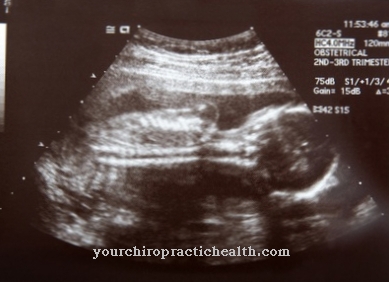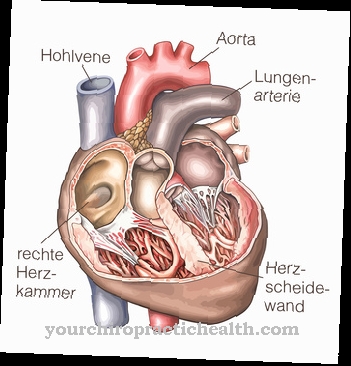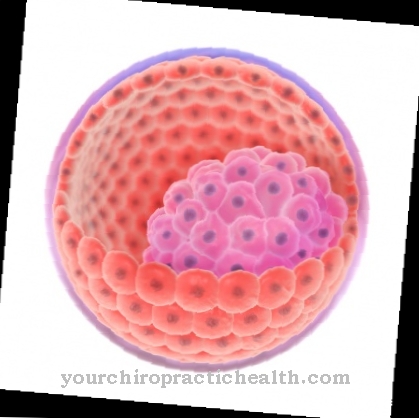Breast milk represents the natural form of infant nutrition. It is a body fluid that is created in the mother's breast after the birth of a child and, if there is no health problem, is formed as long as the child is breastfed. According to its needs, the composition of breast milk changes as the child ages.
What is breast milk?

The human Breast milk essentially corresponds to the milk produced by all mammal species. It is formed in the glandular tissue of the female breast as soon as a woman has given birth.
In addition to water, it contains carbohydrates, fat and protein, but also vitamins and various enzymes and antibodies to ward off possible pathogens. Colostrum, the relatively thick breast milk formed in the first few days after birth, is particularly rich in these substances.
Functions & tasks
The formation of the Breast milk is initiated as early as the second half of pregnancy. During this time, the placenta releases the hormones progesterone and prolactin, which among other things stimulate the growth of the glandular tissue in the breast and prepare it for the production of milk.
Therefore, towards the end of pregnancy, it can happen that the breasts secrete a milk-like liquid. However, the formation of actual breast milk does not begin until one or two days after the child is born. The injection of breast milk into the breasts can be perceived as very painful. First of all, the yellowish and rather thick colostrum, also called foremilk, is given off, which contains a particularly large number of substances for immune defense and the formation of which is mainly controlled by hormones.
However, milk production can be stimulated by frequently placing the baby on the breast. After a few days, the composition of the liquid dispensed changes significantly until it has become mature breast milk after about eight to ten days. It now contains fewer proteins and antibodies than colostrum, but is richer in fats and lactose and other carbohydrates.
It also contains numerous vitamins and minerals as well as enzymes that promote growth and digestion. The respective mixing ratio adapts to the respective needs of the child. Breast milk also changes during breastfeeding itself. While it is very liquid immediately after application to quench your thirst, it becomes fuller and more filling after a few minutes.
Sucking the child stimulates the production of the hormone oxytocin, which not only strengthens the emotional bond between mother and child, but also stimulates the production of breast milk. This is why the mammary glands provide breast milk for as long as a child is regularly breastfed.
Illnesses, ailments & disorders
Although Breast milk is the best form of nutrition for infants, there are circumstances where breastfeeding is not advisable. There are some infectious diseases that can be transmitted from mother to child through breast milk.
With HIV and hepatitis C infections in particular, there is a risk that the corresponding viruses could be transmitted to the baby while breastfeeding. If the mother has a previous cytomegaly disease, only premature babies are at risk. Even when taking various medications, it is possible that the active ingredients pass into breast milk. Therefore, in such cases, breastfeeding should only be carried out after consulting the treating doctor.
Other substances such as alcohol and nicotine, but also various environmental toxins, also get from the woman's body into breast milk and should therefore be avoided during breastfeeding. If an inflammation of the mammary glands, known as mastitis, occurs in connection with breastfeeding, this does not constitute a reason to forego breastfeeding, as there is no risk of infection for the child. Only in the case of a very severe course does it occasionally have to be resorted to mechanically expressing breast milk. If an infant has phenylketonuria or another metabolic disorder, breast milk is usually not recommended.
























.jpg)



